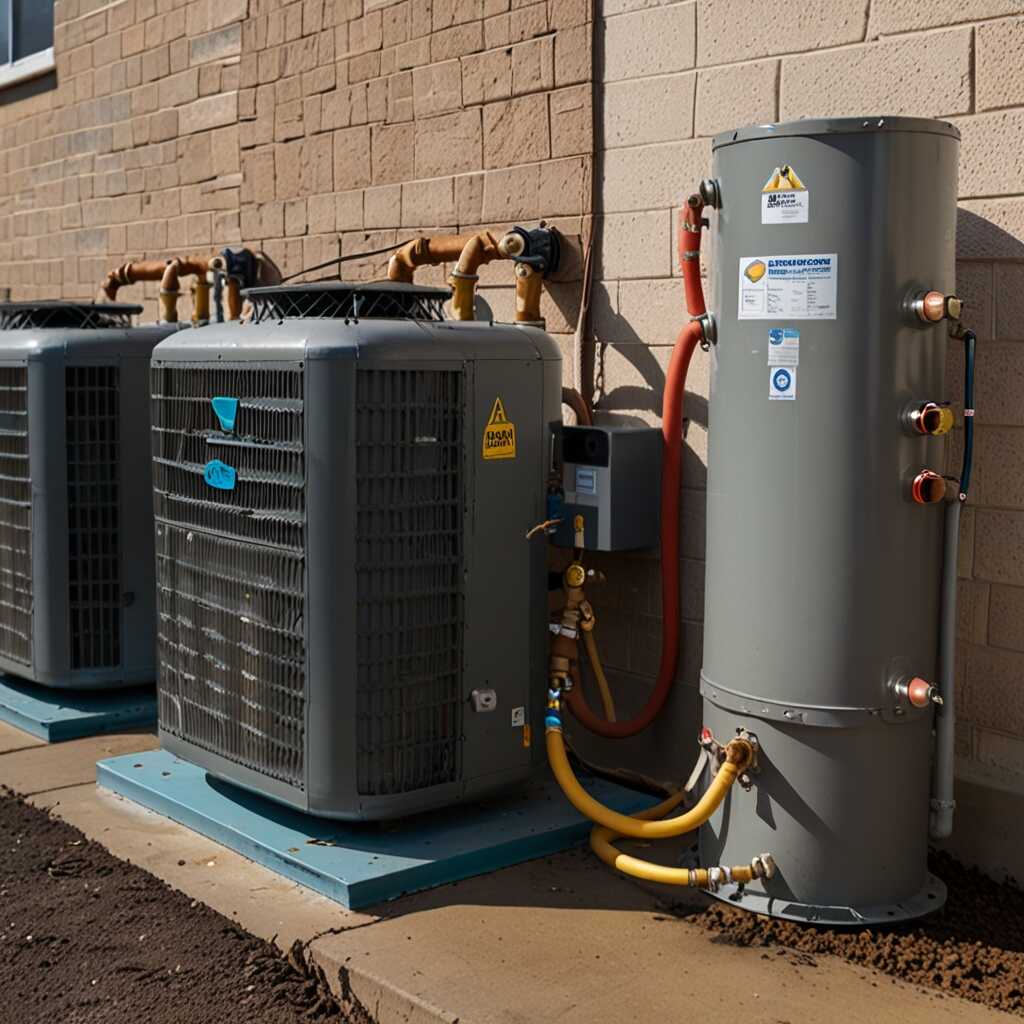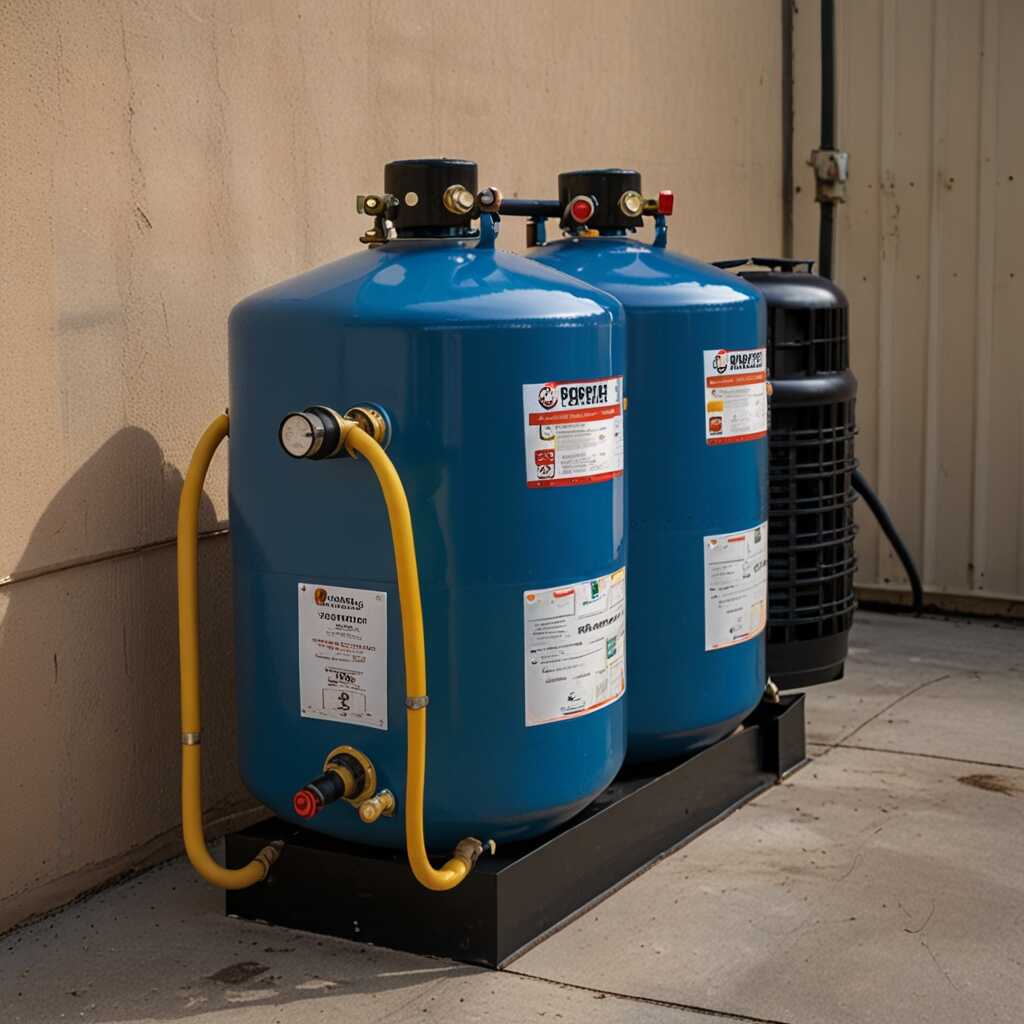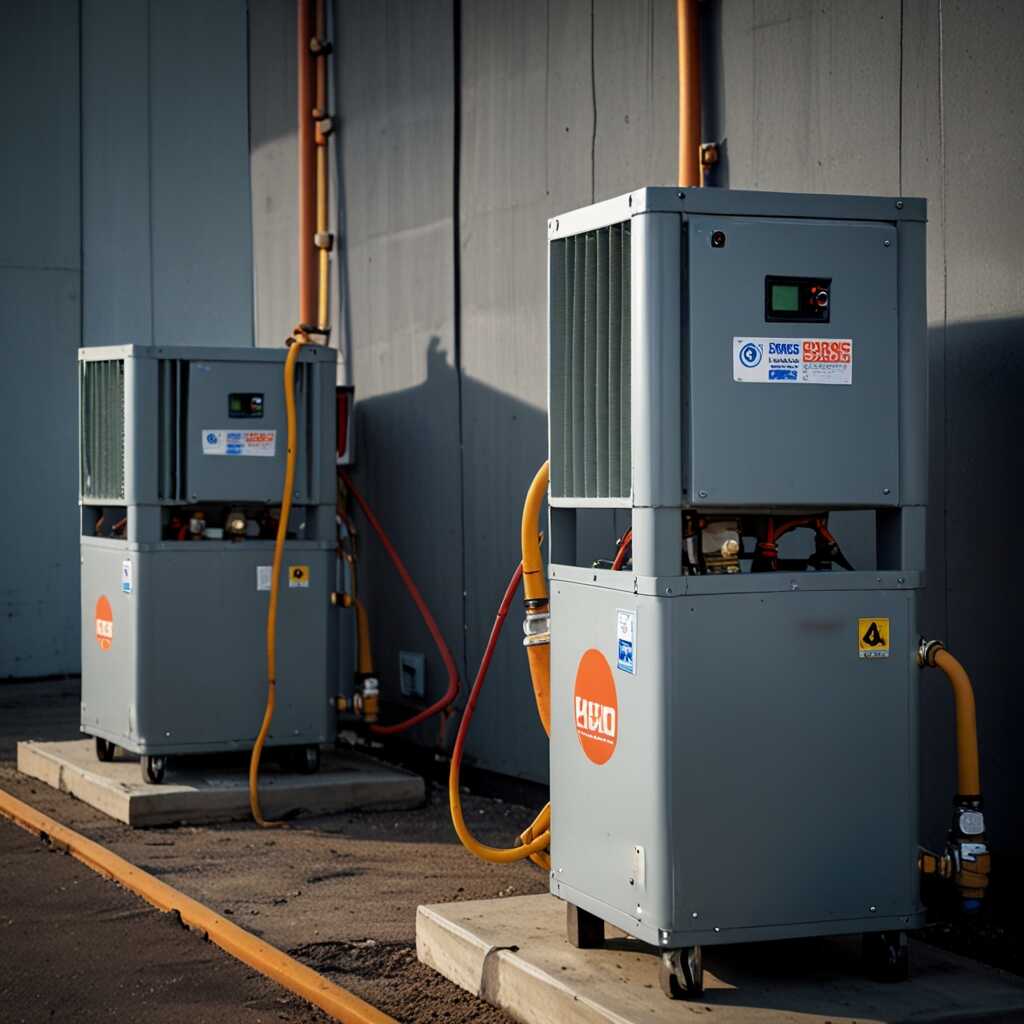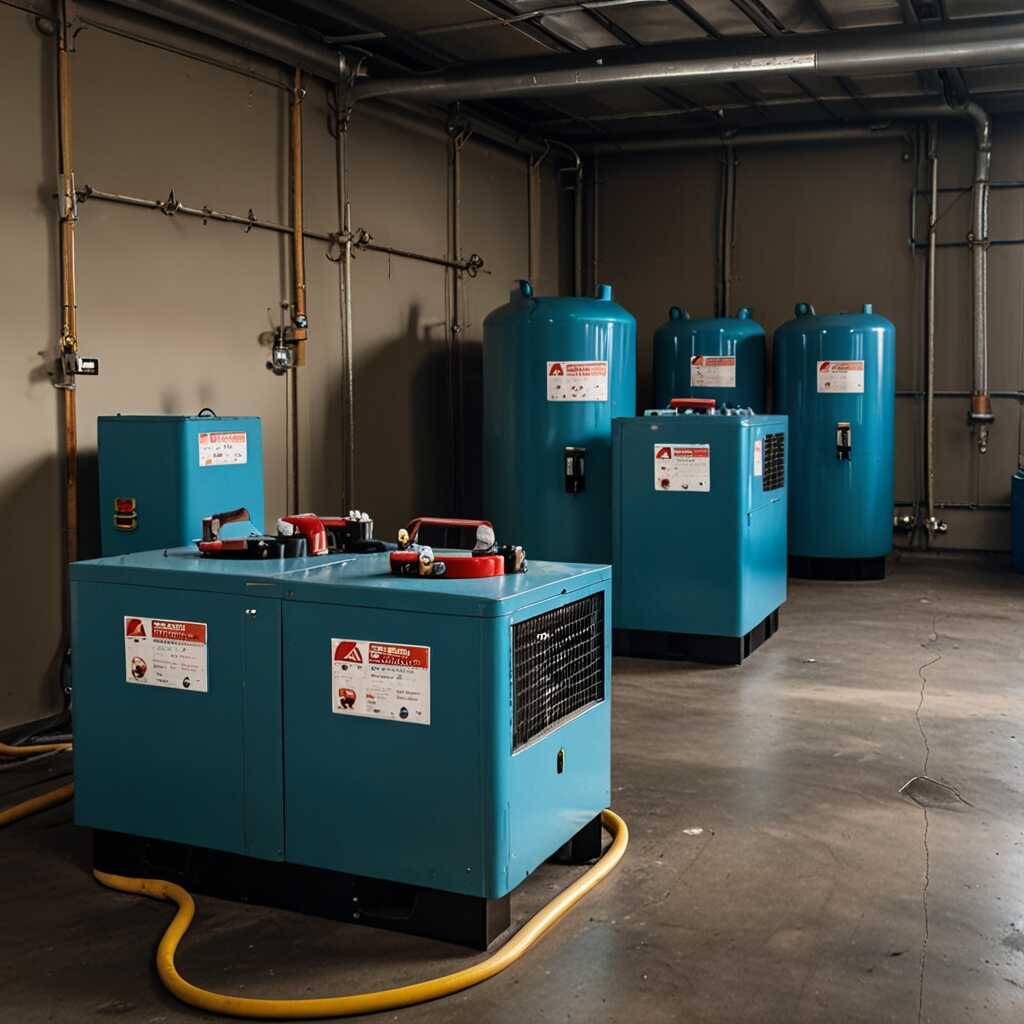Rotary vane refrigerant recovery pumps offer superior vacuum performance compared to traditional recovery methods. These pumps enhance efficiency and effectiveness during refrigerant recovery, making them essential tools for HVAC professionals. At Refrigerant Recovery Pro, we provide expert guidance on selecting rotary vane pumps to improve your HVAC applications. Understanding the advantages of these pumps can lead to better refrigerant management and regulatory compliance.
Principles of Rotary Vane Pump Functionality
Rotary vane pumps operate based on a few key mechanical components that enhance their vacuum performance. These include rotating vanes, a central rotor, and an elliptical housing. The rotating vanes move within the elliptical housing and create chambers where refrigerant gas is drawn in and compressed effectively. Compared to other refrigerant recovery pumps, rotary vane pumps excel in efficiency due to their design. These pumps can achieve a maximum vacuum level of 29.9 inches of mercury, making them one of the best options for HVAC applications. Proper testing and user reviews indicate that their reliability is essential for effective refrigerant recovery operations.
Comparison with Other Pump Types
Rotary vane pumps offer unique advantages when compared to alternatives like diaphragm and piston pumps. They maintain consistent vacuum levels and handle varying refrigerant types, delivering reliable performance. The design allows for smoother airflow and less turbulence, which enhances their operational reliability. Additionally, they can deliver fast recovery times, which is crucial when working in time-sensitive environments. Many HVAC professionals have found rotary vane pump efficiency is superior, particularly in demanding tasks like commercial refrigerant recovery. This efficiency translates into better job outcomes and satisfied clients.
Significance of High Vacuum Performance in HVAC Refrigerant Recovery
High vacuum performance is essential for effective refrigerant recovery. Inadequate vacuum levels can lead to operational inefficiencies and increased chances of refrigerant leaks. These leaks not only waste refrigerant but can also breach regulatory compliance. Rotary vane refrigerant recovery pumps are designed for high efficiency, ensuring that desired vacuum levels are met. Achieving a vacuum pressure of 500 microns or lower is often necessary for optimal refrigerant recovery. HVAC professionals must understand that reliable vacuum performance enhances the overall efficiency of their recovery processes.
Key Factors Influencing Vacuum Performance
Several factors influence the vacuum performance of refrigerant recovery equipment. Rotary vane pumps are engineered to provide robust performance under various conditions. The quality of the pump’s materials impacts its ability to handle different refrigerants without degradation. Regular maintenance and proper testing of these pumps ensure they remain efficient. Additionally, factors like the length and diameter of hoses, along with their connections, play a crucial role in achieving low vacuum levels. Understanding these elements helps HVAC technicians maintain compliance with regulations and ensures reliable refrigerant recovery.

Rotary Vane Pumps Versus Alternative Recovery Pump Technologies
Rotary vane pumps stand out for their exceptional vacuum performance and reliability. They usually provide higher vacuum levels compared to other pump technologies, such as diaphragm or scroll pumps. This translates into faster refrigerant recovery and superior efficiency during HVAC applications. Brands like X and Y have proven track records for quality in rotary vane pumps. These pumps are designed to handle large refrigerant volumes, with some models achieving vacuum levels of 10 inches of mercury or lower, which greatly enhances recovery efficiency.
Understanding the Efficiency of Rotary Vane Pumps
Rotary vane pumps offer remarkable efficiency due to their construction and operation. The vanes inside the pump provide consistent sealing, which results in lower operational losses compared to alternatives. This key feature allows rotary vane models to achieve impressive vacuum levels. Additionally, reliable rotary vane pumps can maintain these performance metrics throughout their lifecycle with minimal maintenance. Their design ensures a longer life span with great reliability, enabling HVAC professionals to focus on their work without frequent equipment failures. Overall, the rotary vane technology combines quality with performance, making it a wise choice for refrigerant recovery.
Numerical Insights into Pump Performance
- Rotary vane pumps achieve vacuum levels as low as 25 microns.
- These pumps operate at an average flow rate of 2-5 CFM, optimizing recovery time.
- The motor power typically ranges from 1/2 to 3/4 horsepower.
- Recovery capacity often exceeds 90% efficiency for common refrigerants.
- Lifetime ratings for these pumps vary, averaging around 5,000 hours.
- These pumps can recover refrigerants at temperatures up to 150°F without performance loss.
- The cost of these pumps generally lies between $500 and $1,200, depending on specifications.

Critical Factors That Impact Vacuum Performance in Recovery Systems
Several key factors influence vacuum performance in rotary vane refrigerators. These include equipment design, operator techniques, and environmental conditions. Rotary vane pumps are engineered for durability and performance. Their ability to deliver reliable vacuum levels depends on the materials used in manufacturing and the precision of their assembly. Optimal operator techniques entail understanding proper evacuation procedures and handling to ensure the pump functions efficiently. Environmental factors such as temperature and humidity also influence how the pump operates. Users can significantly optimize pump performance by evaluating these aspects closely.
Understanding Equipment Design for Vacuum Performance
Equipment design plays a critical role in the vacuum performance of rotary vane refrigerant recovery pumps. High-quality materials provide durability and improve the reliability of the entire pump system. Features such as the size of the vanes, the quality of seals, and chamber geometry affect performance efficiency. Pumps designed for high-speed applications typically achieve better vacuum levels. Testing has shown that some high-end rotary vane units can reach vacuums as low as 1 inHg, making them essential in HVAC scenarios requiring deep vacuum. The design enhances operational efficiency, enabling technicians to complete jobs rapidly.

Maintenance Practices for Enhancing Pump Performance and Longevity
Key maintenance practices for rotary vane refrigerant recovery pumps include regular cleaning, oil changes, and inspections. These steps are essential for ensuring the reliability and efficiency of the pumps in HVAC systems. Regular maintenance helps in identifying wear and tear before it causes significant performance issues. It is vital for technicians to review the manufacturer’s guidelines for servicing and to perform these tasks at recommended intervals. Consistent maintenance enhances pump performance and prolongs its lifespan.
Cleaning and Inspection Processes for Rotary Vane Pumps
Cleaning and inspection are critical to maintaining the performance of rotary vane pumps. Technicians should regularly check the pump’s filter and remove any contaminants that could affect operation. The oil must be clean and at the required level to enable proper lubrication of the pump’s internal components. Inspect the hoses and connections to ensure there are no leaks. Following these cleaning and inspection processes regularly leads to improved performance and reliability, allowing the pump to handle refrigerants effectively while minimizing downtime for service.
Key Advantages of Vane Technology
- Rotary vane pumps deliver superior vacuum levels, improving recovery results.
- They offer reliable performance across a wide temperature range for various refrigerants.
- These pumps feature low maintenance needs, saving time and costs for technicians.
- High evacuation speed significantly reduces the overall system downtime.
- They possess durable construction, enhancing longevity in harsh job environments.
- Quiet operation minimizes noise levels during use, creating a better working atmosphere.
- Operators report ease of setup, allowing for quicker readiness during HVAC tasks.

Understanding Regulatory Frameworks for Refrigerant Recovery Operations
HVAC professionals must follow specific refrigerant recovery regulations to ensure operational compliance. The Environmental Protection Agency (EPA) sets forth essential regulations regarding the safe handling and disposal of refrigerants. Technicians must understand the refrigerant management practices outlined in the Clean Air Act. Local and state regulations may also apply. Entities involved in establishing these regulations include the EPA, OSHA, and local environmental agencies. These agencies provide the guidelines for efficient and safe refrigerant recovery practices. A technician typically requires at least two years of experience to effectively manage refrigerant recovery equipment, enhancing their reliability in compliance.
Key Agencies Regulating Refrigerant Recovery Practices
Several key agencies play a critical role in regulating refrigerant recovery practices. The EPA oversees federal compliance with the Clean Air Act, ensuring that HVAC professionals adhere to refrigerant recovery safety standards. OSHA enforces workplace safety related to refrigerant handling. Local environmental agencies may have additional regulations that HVAC technicians must follow. It is important for professionals to regularly review compliance requirements to avoid penalties. Keeping abreast of changes in regulations helps enhance the efficiency and safety of refrigerant management practices.
Case Studies Demonstrating Rotary Vane Pumps in Action
Several successful cases highlight the effectiveness of rotary vane refrigerant recovery pumps. In a commercial HVAC installation, one technician reported a recovery time improvement of up to 30% compared to traditional pumps. Another case in a residential setting showed enhanced efficiency while handling R-410A refrigerant, demonstrating the flexibility of these pumps across various applications. The reliability of rotary vane pumps allows for safer and faster refrigerant recovery, which is crucial for compliance with regulations. Users have noted the impressive performance and reduced downtime enabled by these pumps, contributing to overall system efficiency.
Key Benefits Observed in HVAC Applications
Many HVAC professionals have reported significant benefits when using rotary vane pumps in their projects. These pumps have proven to handle multiple refrigerants, including R-22, R-404A, and R-134A, making them versatile tools for technicians. Users appreciate how the rotary vane technology promotes reliable recovery without compromising performance during high vapor loads. The efficiency of these pumps allows technicians to work faster and more effectively, greatly reducing the amount of time spent during refrigerant recovery. Each case study confirms that deploying rotary vane pumps leads to enhanced productivity and compliance with environmental regulations while maintaining excellent performance standards.
Popular Brands and Their Use Cases
- Brand A specializes in high-efficiency rotary vane pumps, ensuring fast recovery.
- Brand B delivers reliable performance, though some users find it less versatile.
- Brand C provides compact models ideal for residential HVAC applications.
- Brand D is known for its user-friendly operation, making it suitable for beginners.
- Technicians working in commercial settings prefer Brand E for its power and reliability.
- Some users choose Brand F for its cost-effectiveness, despite lower performance ratings.
- Students and novice technicians favor Brand G for its educational resources and support.
Emerging Innovations and Future Directions in Recovery Pump Technology
Innovations in refrigerant recovery pump technology are accelerating. Key trends include improved energy efficiency, features designed for ease of use, and advanced materials for durability. Leading manufacturers are enhancing their products with technologies that ensure reliability and optimize vacuum performance. Rotary vane technology stands out due to its robustness and proven results in various applications. In 2025, HVAC professionals can expect substantial improvements in energy efficiency, potentially exceeding 20%. Keeping up with these advancements will help technicians refine their refrigerant management skills and enhance service quality.
Leading Brands and Their Technological Advancements
Top manufacturers of rotary vane refrigerant recovery pumps incorporate innovative designs and advanced materials to boost performance. Brands like X, Y, and Z are focusing on features such as quieter operation, lightweight construction, and improved recovery rates. These improvements not only help HVAC technicians perform tasks more efficiently but also ensure durability and longevity of the equipment. In addition, enhanced safety features provide peace of mind during refrigerant recovery. By evaluating reviews and comparisons from Refrigerant Recovery Pro, technicians can make informed choices about which models best fit their specific needs.